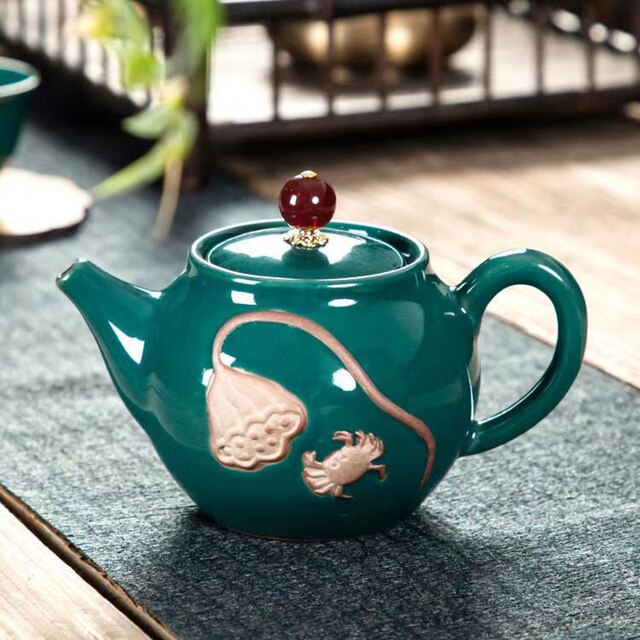
Tea, the soothing elixir that has woven its magic across cultures and continents, has been cherished for centuries. With its popularity, the teapot and tea sets have emerged as indispensable companions on this delightful journey of tea-drinking. From the ancient tea ceremonies of China to the sophisticated gatherings of British aristocracy, the teapot and tea sets have stood as symbols of tradition, hospitality, and social connection. In this comprehensive exploration, we embark on a delightful journey through time to unveil the captivating history of teapots and tea sets and the role they have played in shaping our cherished tea-drinking rituals.
1. Ancient Origins
The captivating tale of teapots and tea sets begins in ancient China, where the infusion of tea was first discovered. Initially used for medicinal purposes, tea later evolved into a recreational beverage during the Tang dynasty (618-907 AD). During this time, tealeaves were compressed into cakes or ground into powder and whisked in bowls. The first evidence of teapots emerged during the Yuan dynasty (1271-1368 AD), where they were used primarily for steeping and brewing tea. These early teapots were crafted from clay and were relatively small compared to modern versions.
2. The Rise of Porcelain
With the advent of the Ming dynasty (1368-1644 AD), the art of porcelain-making reached new heights. Porcelain teapots became popular due to their elegance and efficiency in retaining heat. The Yixing teapot, a unique type of teapot crafted from clay found in the Yixing region of China, gained immense popularity during this period. Revered for their porous nature, Yixing teapots had the extraordinary ability to absorb and retain the flavor of the tea brewed in them, enhancing the taste with each subsequent use.
3. The Spread of Tea Culture
As maritime exploration and trade routes expanded during the 16th and 17th centuries, tea culture began to transcend China’s borders. European traders and explorers encountered tea during their journeys to the East and brought it back to Europe. Tea drinking rapidly gained popularity among the European elite, resulting in teapots and tea sets becoming valuable status symbols and works of art. The craftsmanship of these vessels often reflected the cultural influences of the regions where they were produced.
4. The British Afternoon Tea
The 19th century witnessed the emergence of a cherished British tradition: afternoon tea. Credited to Anna, the Duchess of Bedford, this delightful pastime involved serving tea with light snacks between lunch and dinner. This trend gave rise to the quintessential British teapot and tea sets. Made from porcelain and fine bone china, adorned with delicate floral patterns and ornate handles, these pieces epitomized elegance and refinement.
5. The Industrial Revolution and Mass Production
The Industrial Revolution of the 18th and 19th centuries revolutionized the manufacturing of teapots and tea sets. Mass production techniques led to more affordable and accessible teaware. While traditional craftsmanship remained highly valued, new materials like stainless steel and ceramics emerged, catering to a broader range of preferences and budgets. This period also saw the incorporation of innovative designs, enhancing functionality and aesthetics.
6. Modern Times and Cultural Adaptations
In the modern era, teapots and tea sets have continued to evolve, adapting to the diverse tastes and customs of various cultures worldwide. Japan’s kyusu teapots, known for their side handles and fine mesh filters, have become synonymous with Japanese tea ceremonies. India’s chai teapots, designed to brew strong and aromatic spiced tea, are iconic symbols of Indian hospitality. Morocco’s Moroccan teapots, with their distinctive long spouts and vibrant colors, are integral to the Moroccan tea ritual.
Conclusion
The history of teapots and tea sets is an intricate tapestry interwoven with the evolution of tea culture itself. From their modest beginnings in ancient China to becoming iconic symbols of elegance and hospitality worldwide, these vessels have played an essential role in bringing people together over a cherished beverage. As we continue to savor the magic of tea, let us raise a toast to the enduring legacy of teapots and tea sets and the timeless rituals they represent. Their journey through time and across cultures is a testament to the power of tea to bridge gaps and unite people in a shared appreciation for tradition, artistry, and the simple joys of life.
